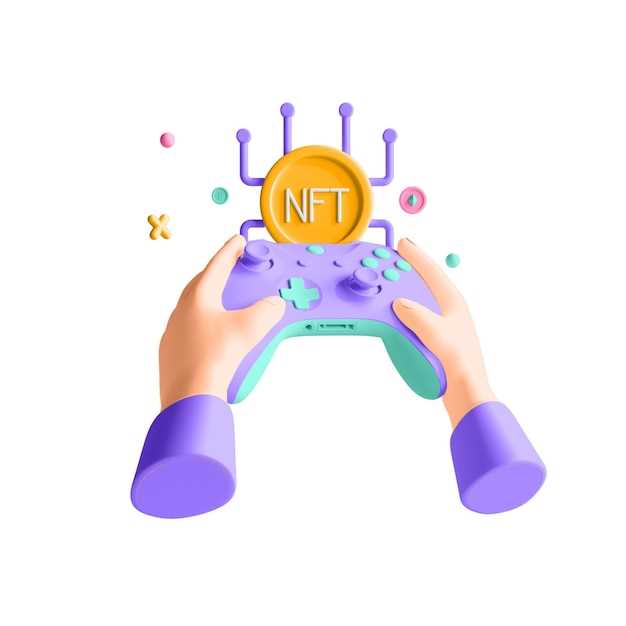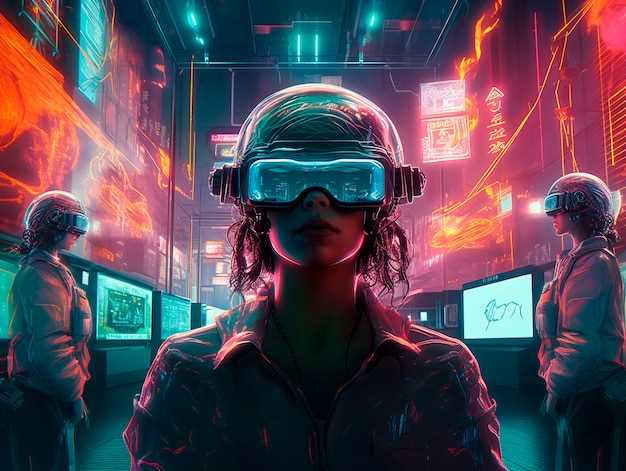Never before has digital possession felt so tangible. Picture owning a unique piece of art, a rare trading card, or a specialized in-game item inside a virtual world. All now more achievable and secure. A revolution is happening right before our screens. This is a groundbreaking shift leading to new ways players engage with their favorite titles.
Interactive experiences have evolved. Traditional methods relied heavily on central control. Now, digital collectibles are creating unique, personalized adventures. Imagine unlocking rewards exclusive only to you. What seemed impossible is today a fresh reality. Monetizing virtual assets opens doors to endless possibilities.
Blockchain technology serves as the backbone. Its transparent nature ensures authenticity. Every asset can be traced and verified. Players can trade items with confidence. This newfound trust enhances user engagement. Furthermore, developers are tapping into innovative concepts, blending financial incentives with entertainment.
Entertainment ecosystems are transforming. Players enjoy deeper connections to their digital belongings. Owning a distinct avatar or weapon elevates immersion levels. Communities thrive on scarce items, driving demand and excitement. Such dynamics not only enrich user experiences but also foster sustainable economic models.
markdown

markdown is a lightweight text formatting syntax. It’s widely used for creating formatted text. This method integrates seamlessly into various platforms. Writers and developers alike appreciate its simplicity. It’s also easy to learn and implement. Its potential extends beyond just text formatting, offering multiple uses. Many see it as not just a tool but an essential component in content creation.
Within interactive experiences, markdown finds numerous applications. It can frame in-game instructions very effectively. Users encounter text that’s clear and concise. Developers insert it into code without much overhead. Consider in-game lore or tutorials–they come alive through markdown. Its flexible format supports consistent transitions and updates, enhancing both readability and developer workflow.
Experienced users often employ markdown for rapid prototyping. It allows for swift creation and modification of content. Imagine a scenario where updates are frequent. The syntax ensures that revisions happen smoothly. This efficiency is vital in dynamic environments. Content creators depend on such speed for maintaining an immersive experience. In essence, markdown fosters a bridge between raw code and polished text.
NFTs Transforming the Gaming Landscape

Digital collectibles have begun reshaping interactive entertainments. Players now own unique items. These assets exist beyond virtual worlds. Permanent, verifiable, tradeable goods become valuable. Enthusiasts engage in ways unimaginable before. Creativity and customization thrive. Innovations appear rapidly.
Imagine a character holding a one-of-a-kind sword. No one else has this item. Its value rises as demand increases. Such integration propels deeper immersion. Gamers invest emotionally and financially.
Developers gain new revenue streams. They design exclusive experiences. Monetization transforms entirely. This system creates a loop of benefits. Independence flourishes for both creators and consumers. Potential growth is promising and exciting.
Moreover, secondary markets emerge. Players trade unique pieces. Blockchain technology ensures authenticity. Exchanges become safe and transparent. Profits materialize in unexpected ways. Engaged communities grow stronger.
Ultimately, digital ownership redefines participation. Personalized adventures appear. Storylines evolve based on player choices. Unprecedented control attracts wider audiences. Fresh ideas constantly flow. The future holds countless possibilities.
Unique In-Game Assets and Ownership
In modern virtual worlds, players can acquire and trade digital items. These items range from rare weapons to exclusive skins. Possessing unique assets significantly enhances the gaming experience. It makes gameplay more engaging and personal. But what makes these assets truly valuable? Their ownership. Ownership rights mean players officially own these digital items. This concept transforms how we perceive value in virtual environments.
Ownership of digital assets brings several benefits. First, it offers true scarcity. Each item is unique, making it desirable. Players feel a sense of pride. They can showcase their possessions. More importantly, they have control. Players can trade, sell, or keep their items. This freedom to decide what to do with one’s assets creates a dynamic market. In this market, players become both collectors and traders. It turns in-game achievements into potentially lucrative opportunities.
Another major advantage is interoperability. Unique digital possessions aren’t confined to one game anymore. They can move across various virtual ecosystems. Imagine carrying your favorite sword from one adventure to another. Interoperability opens up vast new possibilities for players. They can build true digital identities that span multiple virtual worlds. This not only enhances their experiences but also adds real-world value. Players now have digital items they can cherish beyond just one game.
Furthermore, such ownership addresses issues of trust and authenticity. Digital assets can be verified. Their history is transparent. This ensures that each item remains legitimate and its value preserved. Players no longer need to worry about fraud. They can confidently invest time and money. Because every item has a traceable origin, its uniqueness and rarity hold up under scrutiny. This level of certainty brings more serious collectors into the fold. It transforms casual participants into passionate enthusiasts.
Economics and Player Monetization
In recent times, digital assets have dramatically transformed the virtual entertainment landscape. Players now engage with unique virtual goods that hold real-world value. These assets, once intangible, are now being traded and sold, creating an economic ecosystem.
Monetization schemes offer players unprecedented ways to earn from their time spent. Gamers can generate actual income by participating in virtual realms. This evolving model benefits both casual and hardcore players alike.
One significant advantageis the ability for users to truly own their in-game items. Consequently, these digital collectibles offer intrinsic and extrinsic value. Players, now investors, can see returns from trades or sales over time.
Developers profit as well. Enhanced revenue streams emerge from transaction fees and marketplace engagements. This economic framework revitalizes player engagement, fostering a more loyal and active user base.
However, this new waveis not without challenges. Issues of scarcity and inflation within virtual economies need careful management. Regulating and maintaining a balanced ecosystem becomes a priority to ensure sustainability.
Impact of Digital Collectibles on Gaming
Digital collectibles have significantly altered players’ experiences. These unique items entice a broader audience. Players are drawn to rare, exclusive items. The joy of owning something special fuels their interest. Competition rises as gamers seek to acquire and showcase assets. This phenomenon reshapes traditional dynamics within virtual environments. Moreover, it fosters engagement and loyalty among users who value the uniqueness of their collections.
Acquiring digital treasures often leads to enhanced immersion. When players possess rare items, their connection deepens. These collectibles often come with stories or histories, making them even more valuable. It’s not just about gameplay anymore; it’s about proudly displaying what they own. Trading and bartering become integral, adding economic complexity to virtual spaces. The market for acquiring, selling, and trading digital wealth creates a parallel economy that thrives on uniqueness.
Exclusive ownershipamplifies user satisfaction. In possession of something few others have, players feel special. This feeling can drive extended playtime and commitment to the virtual world. As gamers invest more, developers benefit too, seeing greater user retention and engagement. This relationship is symbiotic. Digital collectibles make memories more tangible. Players remember their adventures through these unique items, which serve as milestones in their virtual-life journey.
Communities form around rare items. Forums, chat groups, and social media buzz around these treasures. Gamers share tips on acquiring or trading them. Friendships and alliances can be born from common interests in specific collectibles. These communities enhance the overall experience. They provide emotional connection and shared excitement. As a result, the game world feels more vibrant and alive. These bonds can often extend into real life, blending virtual and physical interactions.
Enhancing Player Experience
Interactive entertainment is always evolving. New technologies bring fresh opportunities. These advancements can significantly elevate user enjoyment. Moreover, they can engage audiences in unprecedented ways. This section explores how modern solutions transform users’ experiences. Furthermore, we’ll discuss various methods game developers employ to captivate players.
- Unique In-Game Items: Interactive items can now possess distinct traits.
- Personalization: Enhance avatars and characters with exclusive accessories.
- Ownership: Players genuinely own their in-game assets.
- Tradable Elements: Exchange items with others freely.
Customization has become a vital component. Personal avatars and characters can have bespoke accessories. This creates deeper emotional connections. Players feel more invested in game journeys. Each choice has a personal touch. Memories are made more vivid. It’s not just about the visuals; it’s about identity. Now, imagine trading these personalized items. Such exchanges allow for dynamic experiences and stronger community bonds.
Community engagement is another crucial aspect. Social interactions within games have amplified user loyalty. Players can collaborate, compete, and share their unique adventures. This interconnectedness fosters a sense of belonging. Regular updates and fresh content ensure continuous excitement. Players remain enthusiastic and eagerly anticipate upcoming features.
- Events: Regularly organized competitions and gatherings.
- Rewards: Exclusive prizes for active participants.
- Quests: New missions that challenge and entertain.
- Updates: Fresh features introduced periodically.
Developers also leverage feedback for improvements. User insights shape future updates. This adaptiveness ensures that experiences remain relevant. Satisfaction levels rise when players feel heard. Ultimately, it’s a collaborative journey. Everyone benefits from a continuously improving environment. By fostering strong relationships between users and developers, the entire ecosystem thrives.
Marketplaces and Trade Opportunities
Exploring virtual markets opens up a world of possibilities. Players can now trade digital assets, unlocking new ways to interact. These platforms have become crucial in establishing economic ecosystems within games. They also support diverse buying, selling, and swapping activities. This dynamic has sparked a fresh wave of creativity.
Several key elements drive the success of these marketplaces:
- Secure transactions ensure trust between users.
- Accessible platforms encourage participation from different demographics.
- Unique items create a sense of exclusivity and demand.
- User-friendly interfaces make trading seamless.
Moreover, secondary markets have emerged as vibrant hubs. Players often engage in various activities:
- Trading rare items that enhance gameplay.
- Exchanging custom skins and character enhancements.
- Purchasing in-game real estate for virtual experiences.
- Buying exclusive event tickets or passes.
In these environments, creators can also benefit. They gain revenue from transaction fees and royalties. Independent developers find new opportunities by building unique content. Such creativity galvanizes communities, fostering deeper engagement. These interactions pave the way for expansive economies within game worlds.
Innovation continues to define these digital marketplaces. As platforms evolve, further trade opportunities will emerge. Players and developers alike will find endless possibilities. This ecosystem thrives on adaptability and user participation, creating limitless avenues for growth.
Video:
NFTs in the Future of the Gaming Industry – Panel at NFT.London 2022

NFTs in the Future of the Gaming Industry – Panel at NFT.London 2022 by NFT NYC 29 views 1 year ago 12 minutes, 47 seconds
Questions and answers:
How are NFTs changing the gaming industry?
NFTs (Non-Fungible Tokens) are significantly transforming the gaming industry by introducing unique, verifiable, and tradable digital assets. Traditional gaming models often limit player ownership and control over in-game items. However, with NFTs, players can actually own their in-game assets like skins, weapons, and even virtual land. These assets can be traded, sold, or bought on various marketplaces, providing an economic dimension to gaming that was previously impossible. This new paradigm is also fostering a play-to-earn model where players can earn real-world income through gameplay. Moreover, NFTs enable cross-platform compatibility, allowing users to transfer assets between different games built on the same blockchain. This significantly enhances the player experience and offers new opportunities for engagement and revenue for both developers and players.